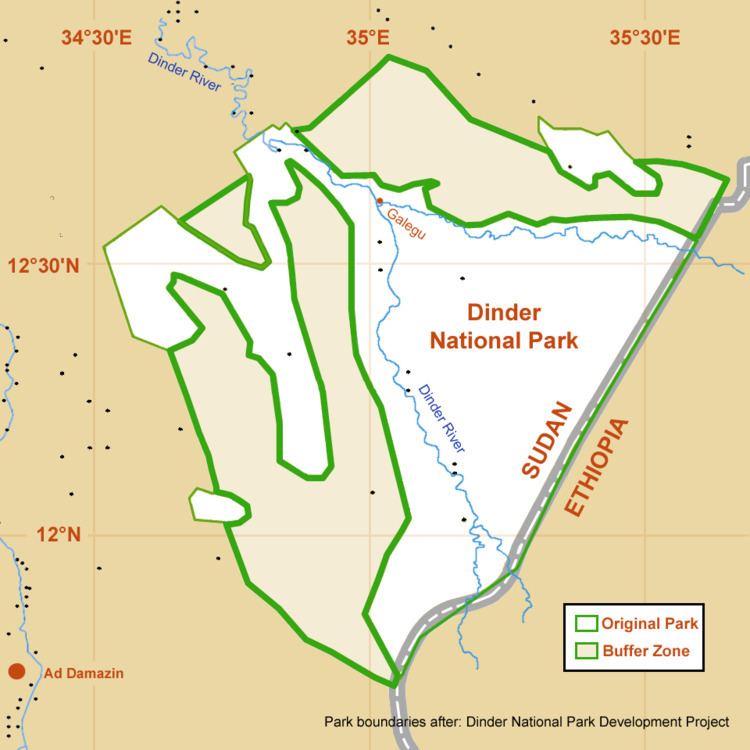Phone +249 18 531 2812 | Area 10,000 km² Established 1935 | |
 | ||
Similar National Museum of Sudan, Jebel Barkal, Museum of the Caliph's, Nimule National Park, Boma National Park | ||
Sudan dinder national park
Dinder National Park is a national park and biosphere reserve in eastern Sudan, on the Sudanese border with Ethiopia.
Contents
Dinder national park
Location
Dinder lies approximately 400 kilometers southeast of Khartoum, on either side of the Dinder River bounded to the north by the Rahad River.
The town of Dinder (100 kilometres (62 mi) northwest) acts as a gateway for tourists wishing to enter the Park.
History
The area of Dinder was heavily populated when it was first visited by Europeans in 1861. In the 1880s, at the time of the Mahdist War and a famine, the human population vanished. Alfred Harrison found only traces of human habitation in 1925. Dinder was established as a park in 1935 following the London Convention of 1933 and designated in 1979 as a member of the World Network of Biosphere Reserves. In 1983 the park was extended 2,630 km2 (1,020 sq mi) towards the west.
Ecology
Dinder National Park is ecologically significant because it falls on the ecotone between the Sahel and Ethiopian Highlands ecoregions. It contains three distinct ecosystems:
The park is home to 27 species of large mammals such as Masai lions, African leopards, Sudan cheetahs, over 160 species of birds, 32 species of fish, and small mammals, bats, reptiles, and amphibians. It is in a major flyway used by birds migrating between Eurasia and Africa. There are many North African ostriches residing in the national park as well. In 2016, a population of lions, possibly ranging from about 73-146, were discovered in Dinder National Park by a team led by Oxford University's Hans Bauer.
Threats
The ecology of the park is threatened by encroachment from cattle herders who are being displaced from their traditional grazing lands by the expansion of crop agriculture, through the fundamental cause of expanding regional population. Populations of migrant grazers, including tiang, Roan, waterbuck and reebuck, are under additional pressure as land outside the park that they migrate across has been converted to farmland. Game counts between 1971 and 2001 have shown a precipitous decline in most large mammal species, with the population of waterbuck falling by 85%, reedbuck by 72%, and oribi by 68%. Other species have been extirpated in Dinder since was gazetted, including African bush elephant, black rhinoceros, hippopotamus, tora hartebeest, Nubian giraffe, Soemmerring's gazelle, and the Nile crocodile.
Dinder National Park has been a habitat of the painted hunting dog (Lycaon pictus), but this endangered canid has had a decline in its numbers in this region.
